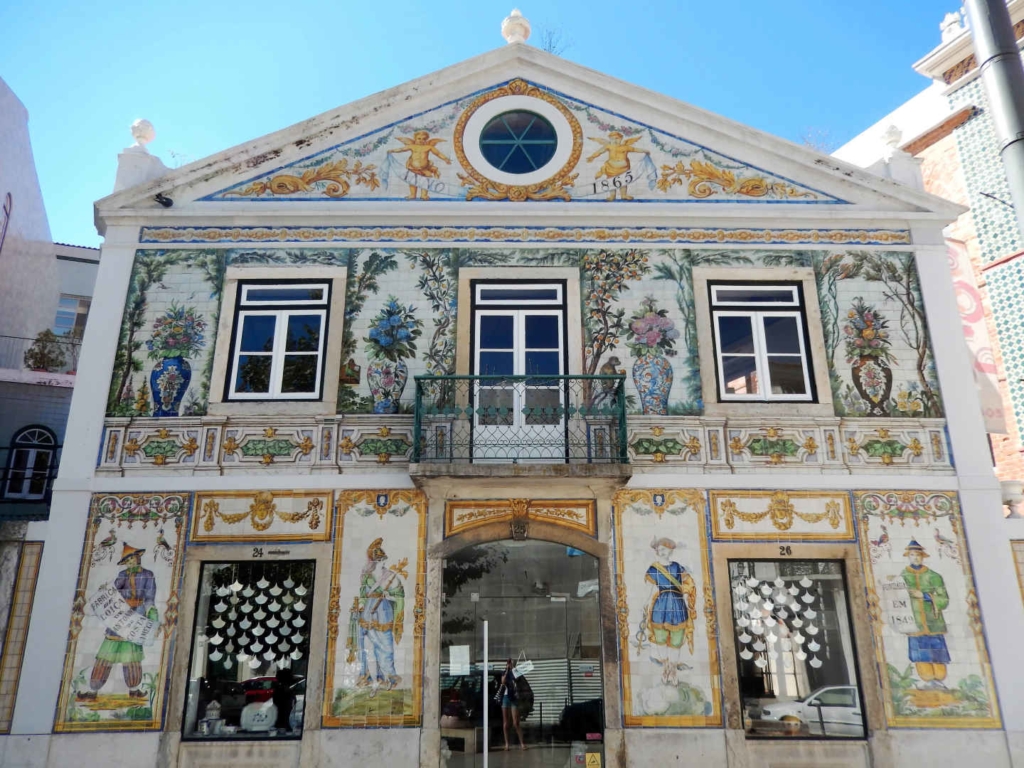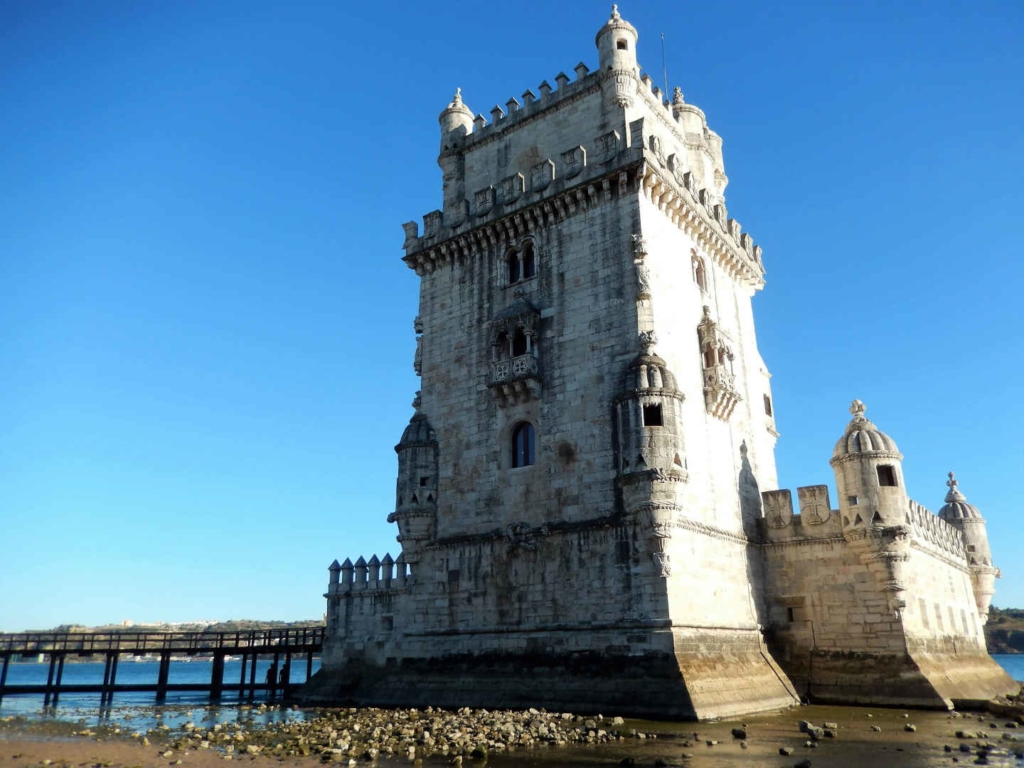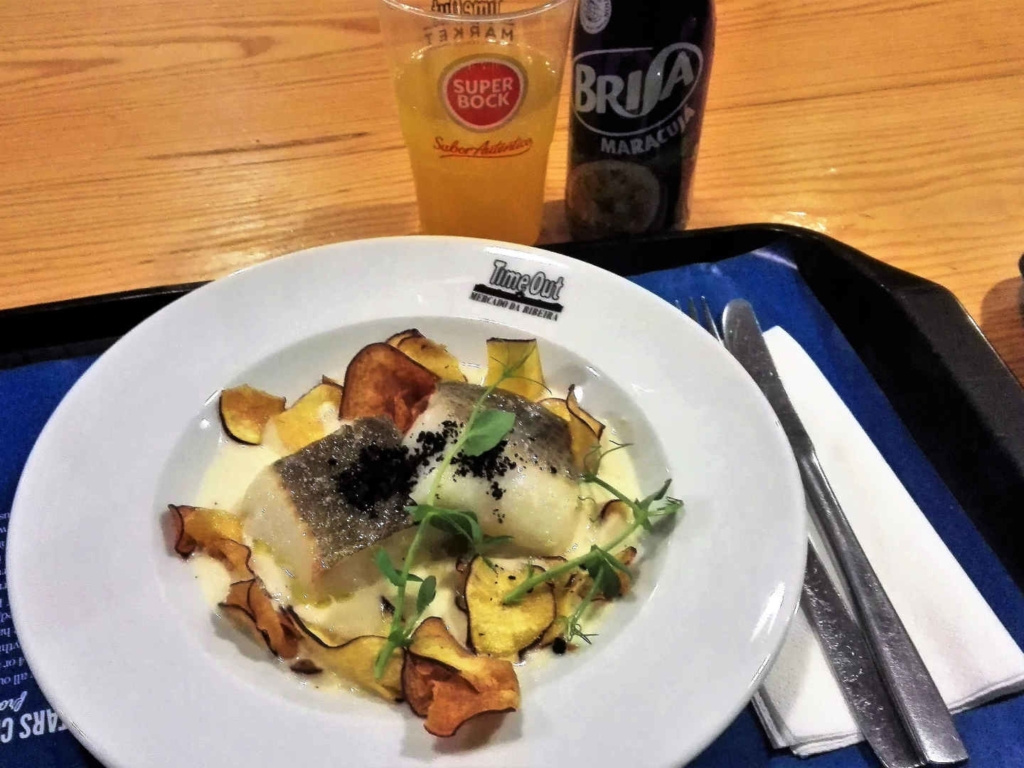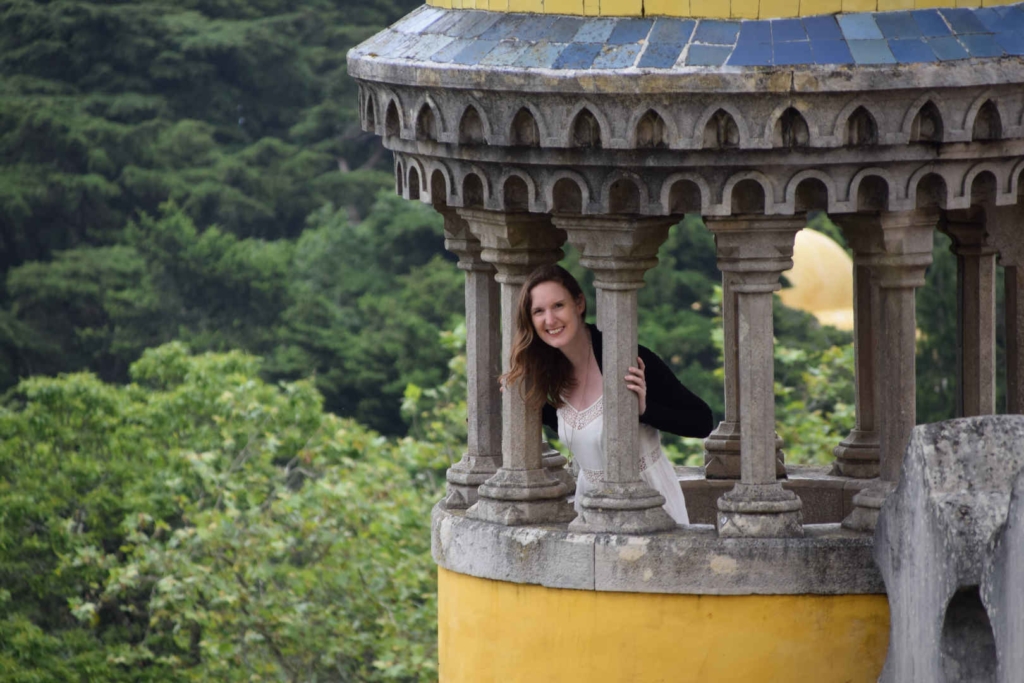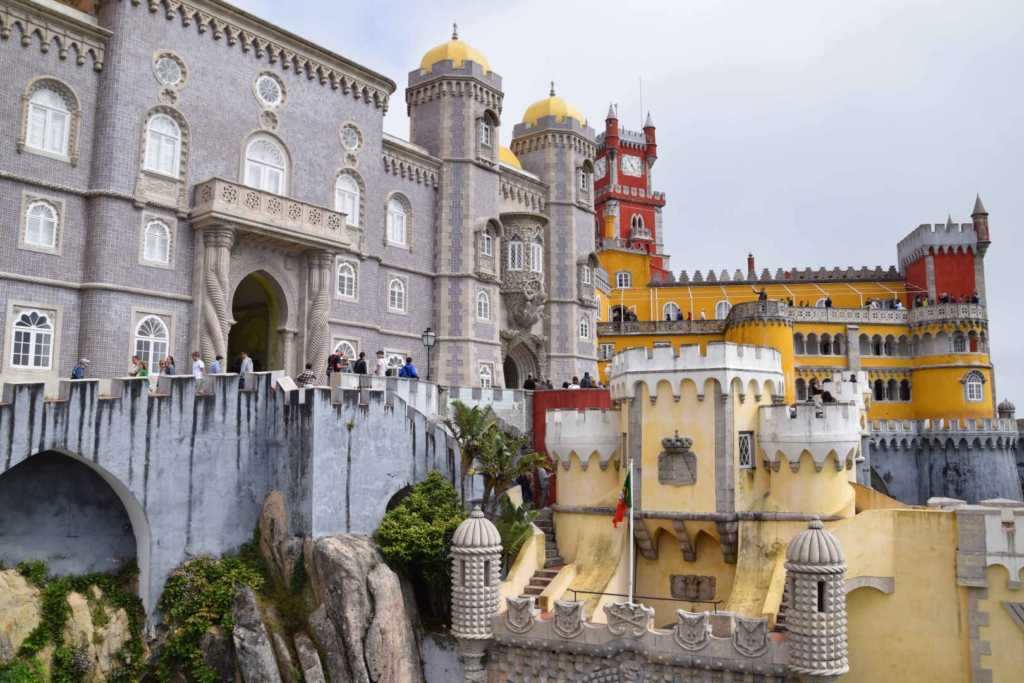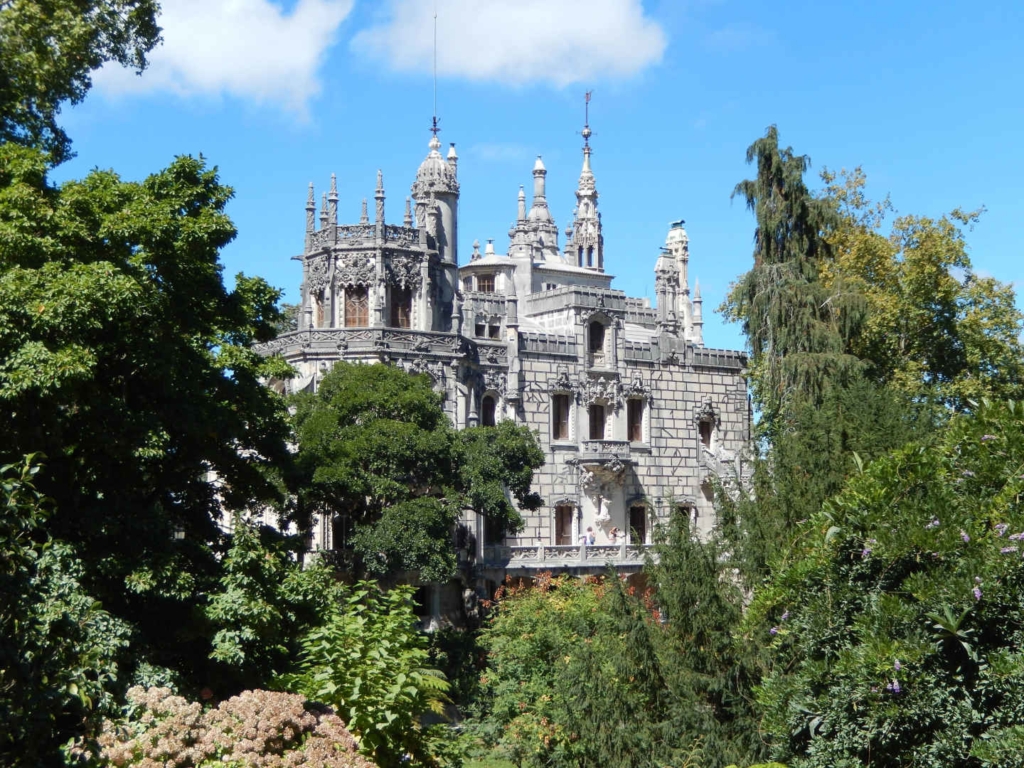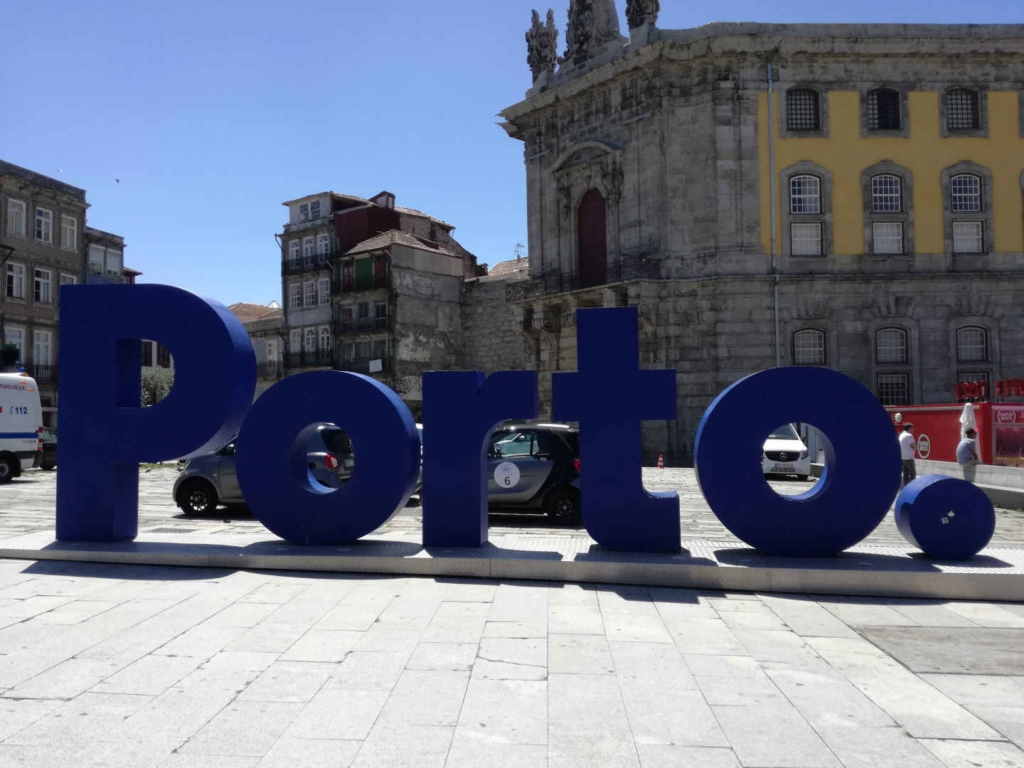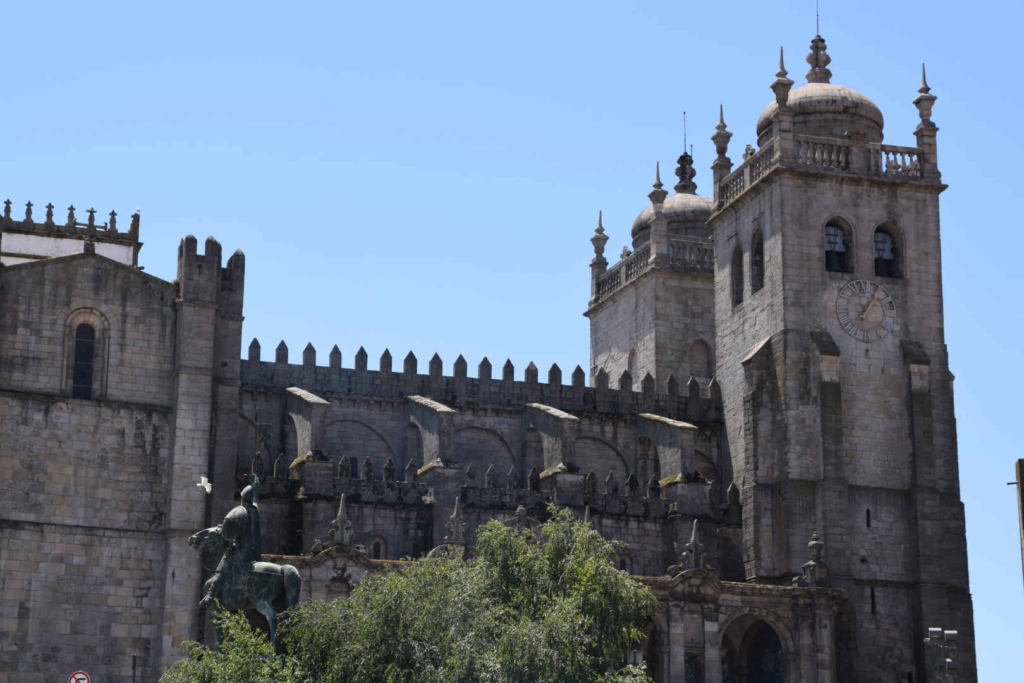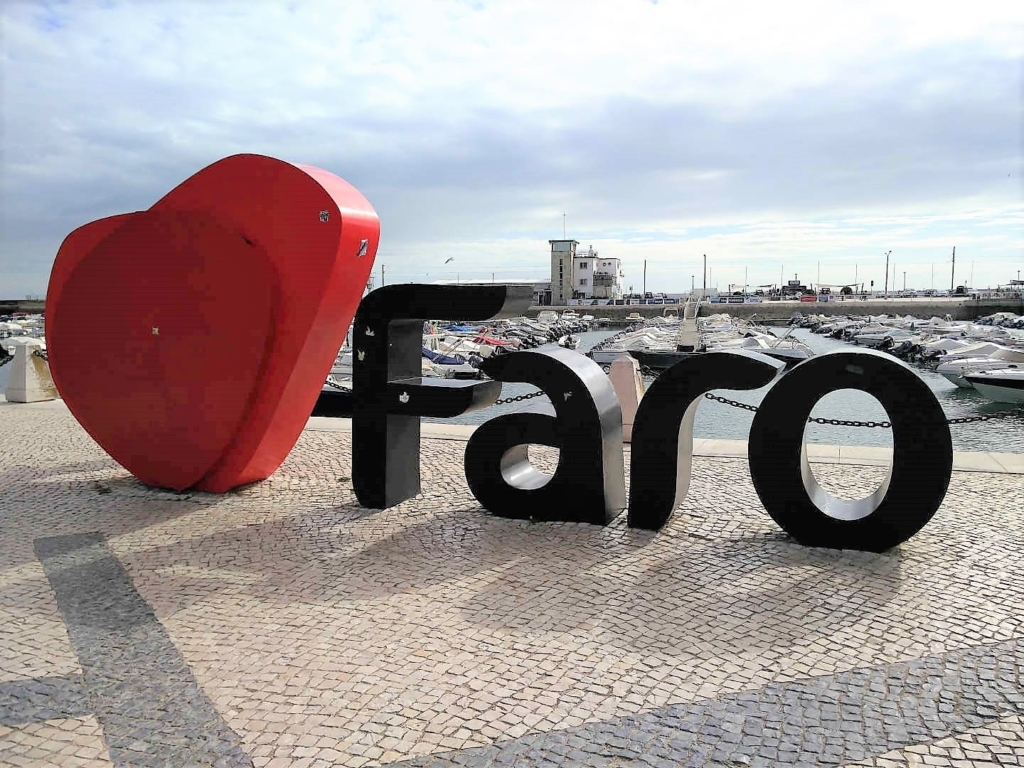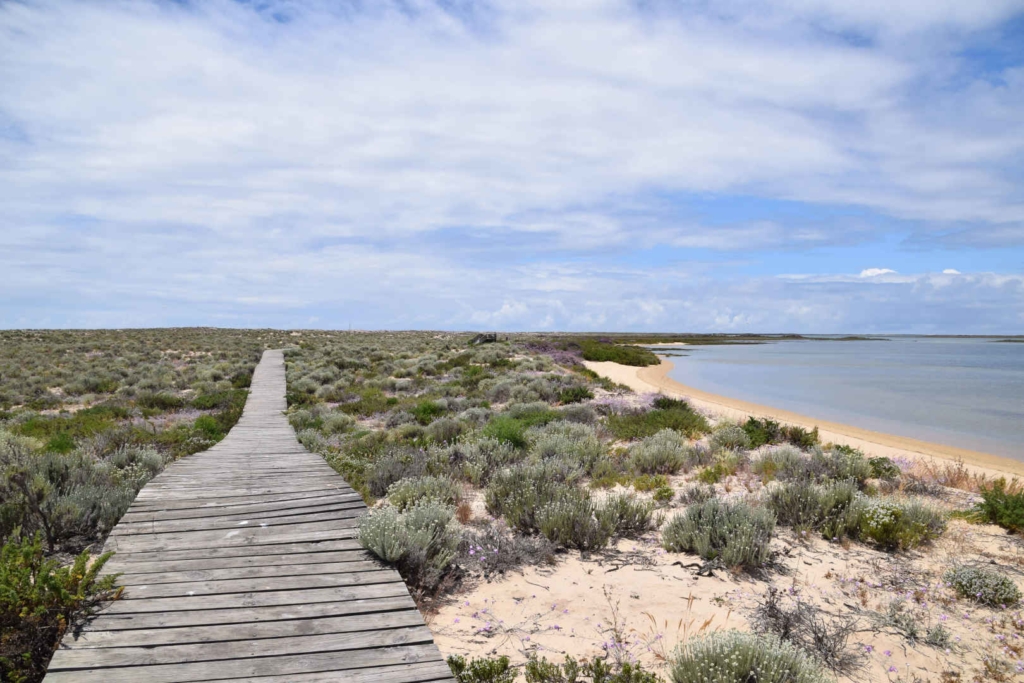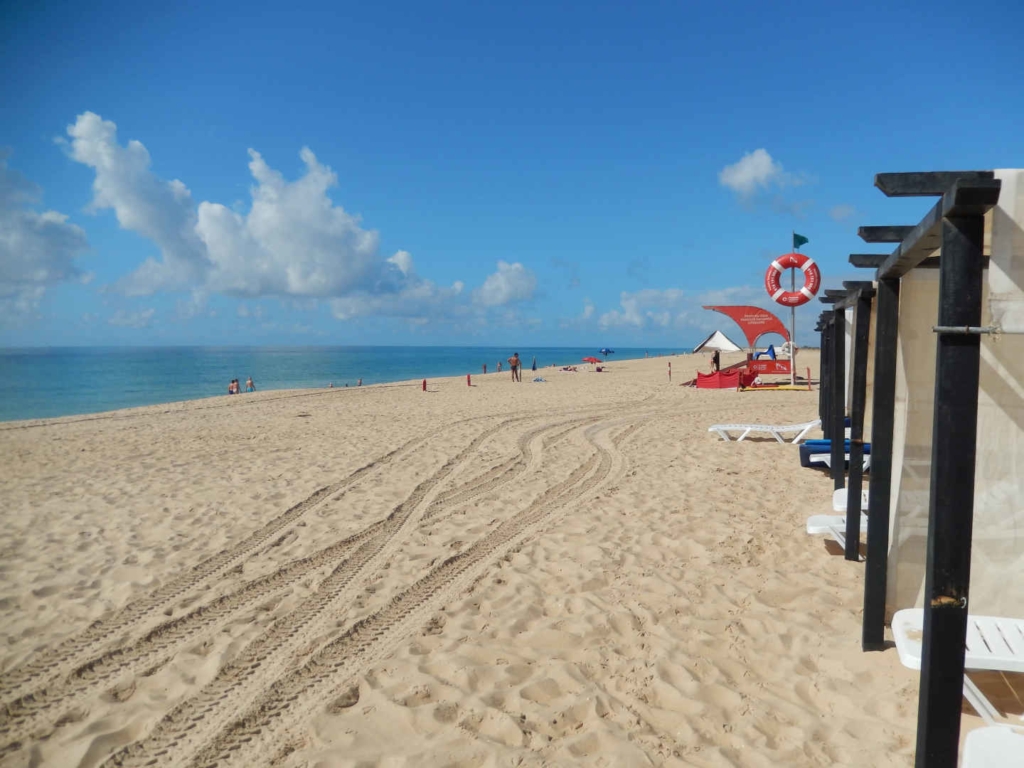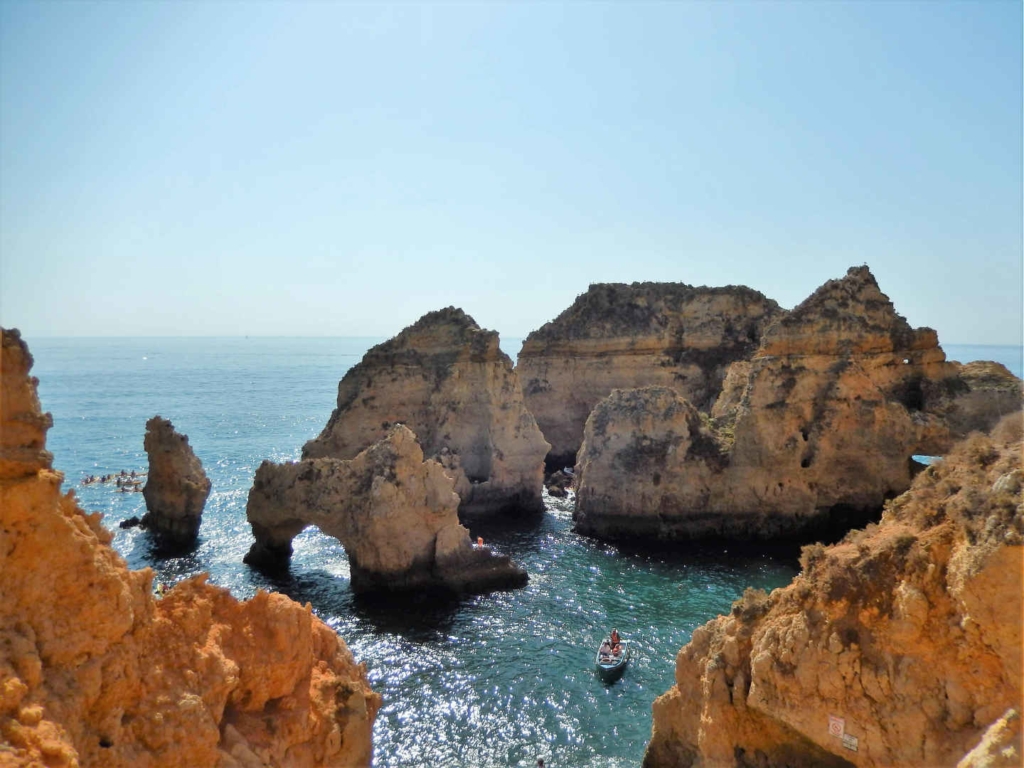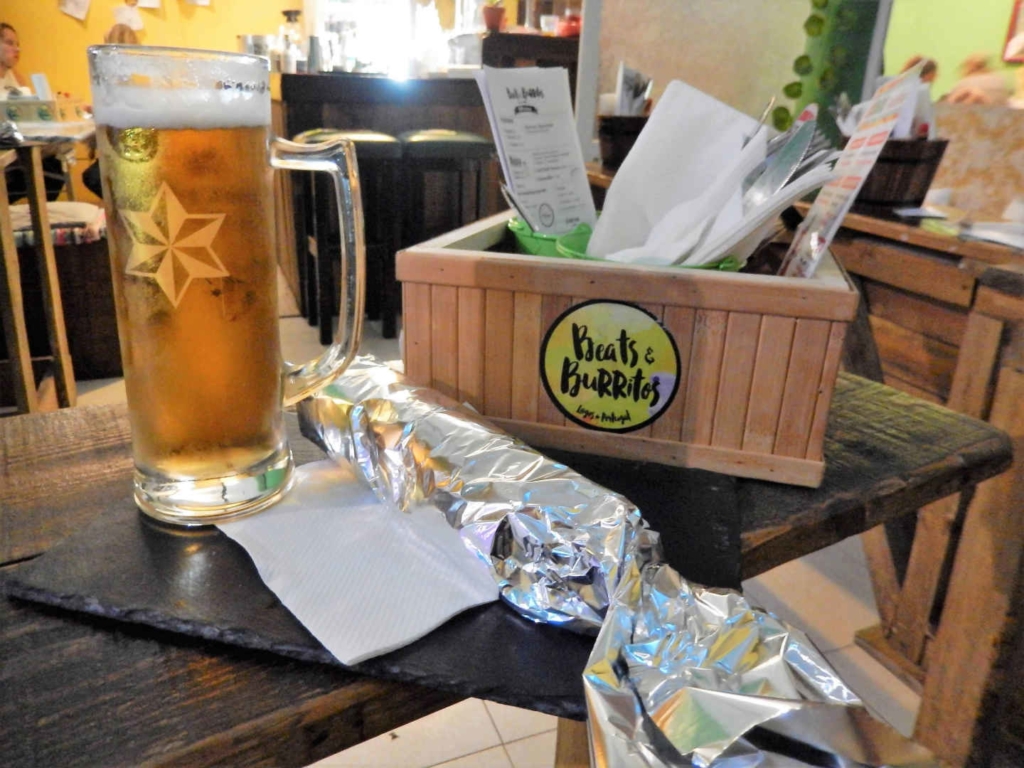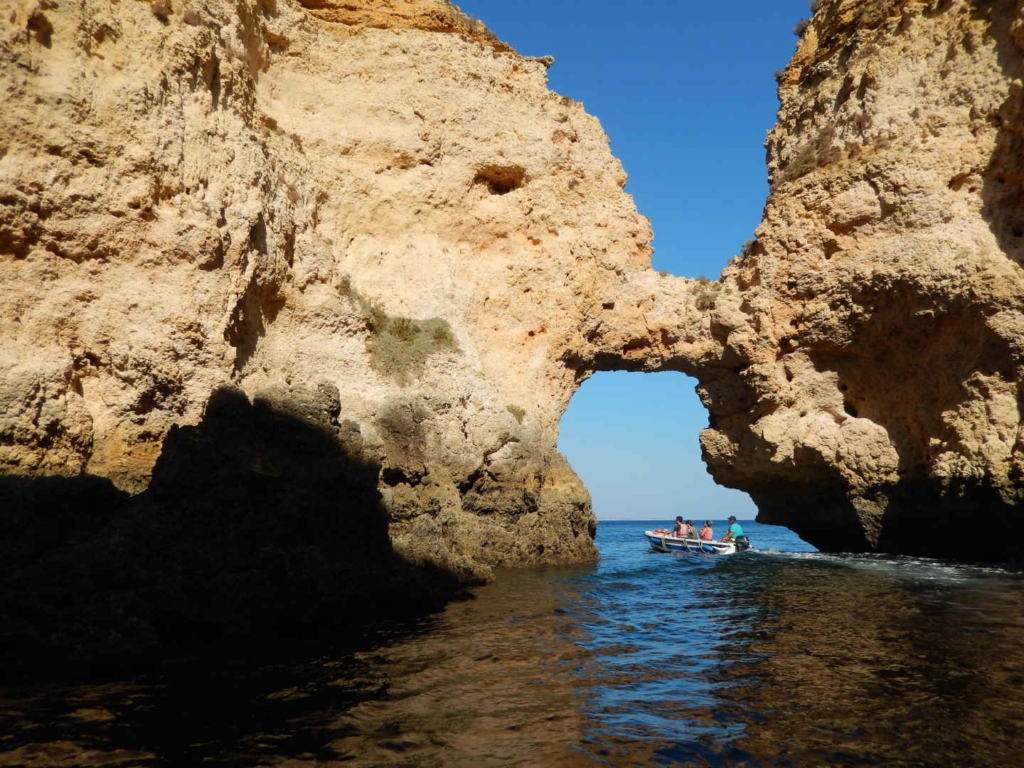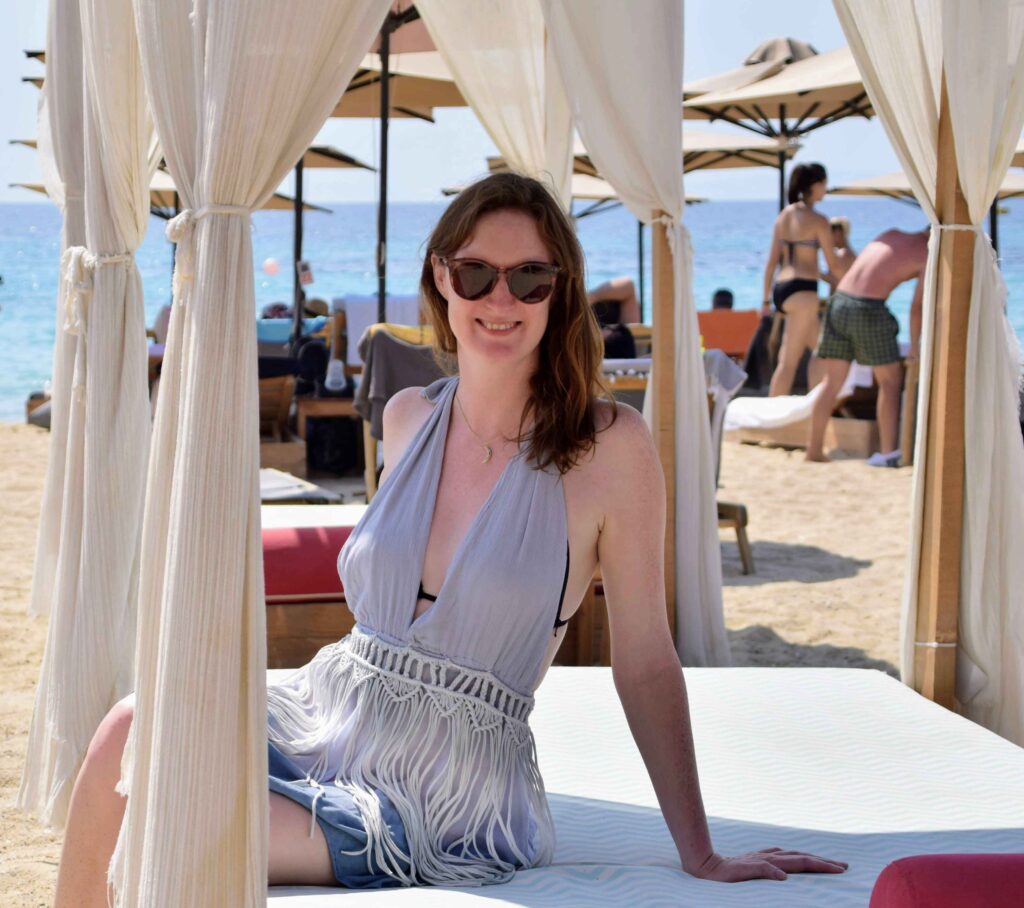If you’re planning 2 weeks in Portugal, this comprehensive itinerary is for you. Portugal has been named Europe’s greatest destination and it’s easy to see why. Unlike other popular European countries, it can still feel like you’re stumbling across a secret – thanks to its hidden island escapes and quiet cobbled lanes. I’ve explored this country several times, staying in some of the best places to visit in Portugal along the way. Discover my perfect 2 week Portugal itinerary and create your dream trip – no car needed.
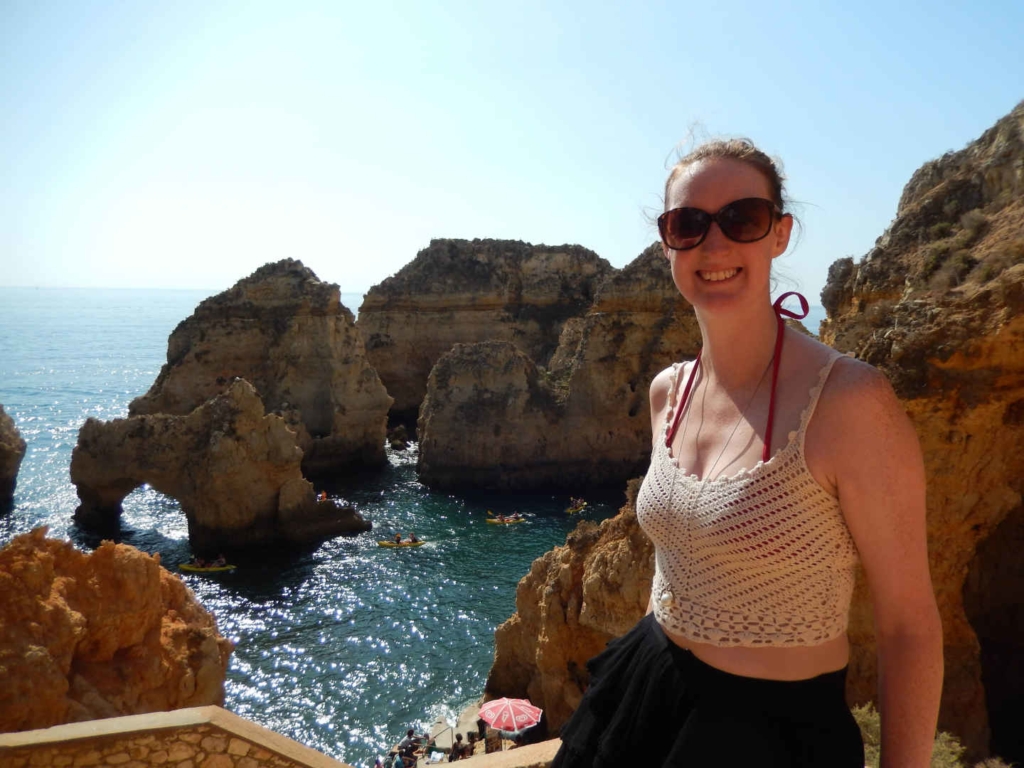
This post may contain affiliate links. That means, if you make a purchase, I may receive a small commission. As an Amazon Associate I earn from qualifying purchases. For more information, read my disclaimer.
Quick overview of the perfect 2 week Portugal itinerary
- Days 1-3: Explore Lisbon’s historic castles, trams and fado concerts
- Days 4-5: Discover Sintra’s fairy-tale palaces and romantic gardens
- Days 6-8: Experience Porto’s port wine heritage and riverside charm
- Days 9-10: Uncover Faro’s secret island paradise in the Algarve
- Days 11-12: Adventure along Lagos’ dramatic coastal cliffs
- Days 13-14: Return to Lisbon for departure
- Best time to visit: April-June or September-October for ideal weather
- Transport: Perfect for 2 weeks in Portugal by train – no car needed
Planning your 2 week Portugal travel itinerary
This Portugal 2-week itinerary covers the country’s highlights while allowing enough time to truly experience each destination with relaxed pacing. Portugal has three international airports: Lisbon, Porto and Faro. Most people land in Lisbon first, so this itinerary starts there.
Days 1-3: Lisbon
Your 2 week Portugal itinerary simply must include its capital city. From fado to food markets, there is plenty to see and do if you’re spending a few days here.
Buy the Lonely Planet Portugal travel guide book to help you prepare for your trip.
Day 1: Arrive in Lisbon
Arrive at Lisbon Airport and take the Metro Red Line or AeroBus to the city centre, which costs €2-4 and takes 20-45 minutes depending on your destination. Alternatively, book a convenient private transfer from the airport to your accommodation. Enjoy dinner in the central Baixa or Chiado area and prepare for your first full day exploring Portugal’s capital.
Where to stay in Lisbon
I would recommend staying in the Bairro Alto, Baixa and Chiado neighbourhoods, as they are fun, central and convenient for getting around.
The best places to stay in Lisbon
In Bairro Alto, the sociable Independente Príncipe Real is one of the best hostels in Lisbon for solo travellers. Nearby, The Lx Hill hostel is a cool and contemporary place to stay, with a garden and shared lounge.
If you’re looking for a hotel, try the Casa das Janelas com Vista, a superb guesthouse on a quiet Bairro Alto street. The only drawback is there’s no elevator, only stairs. Alternatively, check out the Dear Lisbon Charming House, an affordable boutique hotel with a plunge pool and bright rooms. For your own apartment complete with a kitchenette, head for the exceptional 54 Santa Catarina Apartments.
Browse the map below to find the best places to stay in Lisbon for your dates:
Day 2: Tram 28 and historic Lisbon
Morning
Take the iconic yellow tram to visit the various neighbourhoods and enjoy the views of this attractive city. Tram 28 passes through Lisbon’s popular tourist districts of Graca, Alfama, Baixa and Estrela and takes around an hour. You can hop off at places that look interesting. At various points on the journey you will see signs for ‘miradouro’ which means a viewing point with panoramic views across the city. Sometimes there will be stalls selling glasses of wine for you to sip as you look out at Lisbon.
Afternoon
If you scale the steep hill to the medieval Castelo do Sao Jorge, you’ll be greeted by more spectacular vistas across the city, as well as the peacocks that roam the area. After exploring the castle grounds, walk through the historic Alfama district to soak up the atmosphere of this charming neighborhood.
Near the castle is the Santa Justa Lift, which was built at the turn of the 20th century. You can get to the viewing platform at the top via the elevator during the day or in the evening for a different perspective over the city.
Evening
If you like chilled hip hop beats in a tranquil garden setting, track down Lisbon’s coolest secret rooftop bar called PARK, which is on Calçada do Combro 58 in Bairro Alto.
You have to go through a parking lot, but when you reach the top floor you’ll find a beautiful garden terrace with gorgeous people and a DJ spinning the decks. I stayed here until the sun set and it was just awesome.
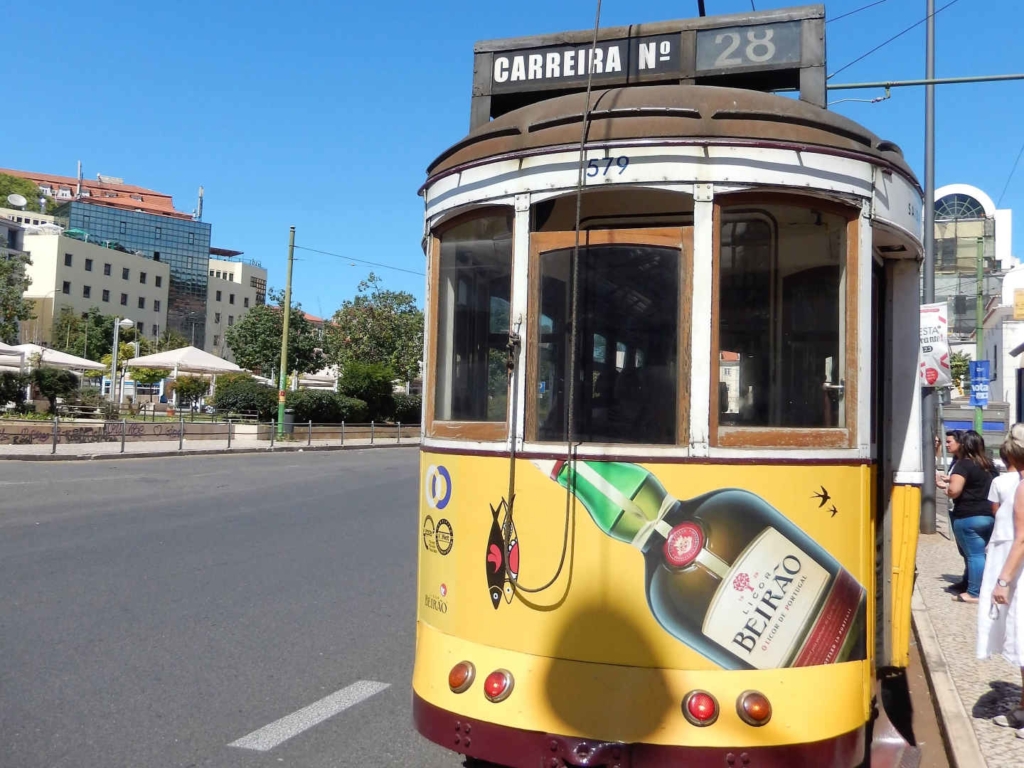
Day 3: Belem
Morning
Take Tram 15 to reach Belém, which is around 50 minutes by tram from the centre of Lisbon.
In Belém, you can taste one of Portugal’s most famous delicacies, the pastel de nata. Located here is the original cafe-shop, called Pastéis de Belém. There’s always a fast-moving queue to buy these world-renowned custard tart treats and it’s usually quicker to take one for the road rather than waiting for a table.
Belém Tower is a medieval fortification that is simply stunning, especially around sunset. You will need to buy a ticket if you want to enter the tower but even from the outside it’s magnificent.
Nearby is the Padrão dos Descobrimentos (Monument of the Discoveries) proudly facing the river. It celebrates the Age of Exploration in the 15th and 16th century, when Portuguese adventurers such as Vasco da Gama traversed the world and traded with merchants from India and the Far East.
Afternoon
Head to the Time Out food market, in the neighbouring Cais do Sodre, which serves a wide range of high quality dishes from different local chefs, all under one roof. I opted for a contemporary twist on the traditional Portuguese dish of ‘bacalhau com natas’ (salted cod in cream sauce), washed down with a passion fruit soft drink from the Portuguese islands of Madeira.
Evening
Head to Bairro Alto for port wine and cheese tasting at The Old Pharmacy, followed by a fado performance at Tasca Do Chico.
Days 4-5: Sintra
With castles in the sky, set in steep pine-covered hills overlooking a chocolate-box historic town, Sintra is one of the most magical places to visit in Portugal, so allow at least a couple of days.
Day 4: Travel to Sintra
Take the train from Lisbon Rossio Station to Sintra, which takes just over an hour and costs €5 one way. Check into your accommodation and try one of the many restaurants around or a pastry shop selling the area’s traditional sweet treats, queijadas de Sintra.
Here is where to stay in Sintra
The best area to stay is in the centre near the train station. I stayed at the affordable Lanui Guest House, a historic house set in attractive gardens that’s just a five minute walk from the station.
There are a handful of hostels in Sintra – try the Moon Hill Hostel, which is centrally located, with stylish decorations and an excellent breakfast.
Discover the latest accommodation deals for your dates in Sintra by exploring the map below:
Day 5: Spectacular castles and gardens in Sintra
Day 5 of this two week Portugal itinerary will be exploring Sintra’s magical places. The best way to reach them is to catch bus number 434 outside Sintra train station (around €7 per person).
First, visit the Palácio da Pena (Pena Palace), the most colourful castle I’ve ever seen. Completed in the 19th century, this UNESCO World Heritage Site is one of the Seven Wonders of Portugal.
Next, go to the nearby Castelo dos Mouros (Moorish Castle). The Moors constructed this medieval castle in the 9th century and it’s also now a UNESCO World Heritage Site. The views from here are spectacular, though it requires a certain level of physical fitness and ability to scale the steps.
Afternoon
My heart was stolen by Sintra’s Quinta da Regaleira. Completed at the start of the 20th century, it is a sprawling rural estate with a romantic palace and chapel surrounded with gardens you can get lost in. Entry is priced at €6 per person.
Winding pathways lead to grottos, wells and Roman, Gothic and Renaissance style architecture, all built to meet the vision of the property’s former owner. It is now a UNESCO World Heritage Site and one of Sintra’s most popular attractions. Allow at least an hour to make the most of your time in this inspiring place.
Days 6-8: Porto
Porto is one of the main cities in Portugal, second only to Lisbon in size and significance. Situated on the Douro River, it was an outpost of the Roman Empire and it’s still magnificent today. Its most famous export is port, a fortified wine named after the city. The relaxed pacing across three days allows you to truly experience this charming northern city.
Day 6: Travel to Porto
Morning: Check out of your Sintra accommodation. This is a full travel day from Sintra to Porto. You’ll need to take the train from Sintra back to Lisbon, then catch the train from Lisbon to Porto. Take the train from Sintra to Lisbon Rossio Station (just over an hour, €5), then from Lisbon’s main train station to Porto (2 hours and 50 minutes, €30-35). I recommend booking advance tickets for better prices.
The best places to stay in Porto
Porto isn’t a large city so you can’t go too far wrong in terms of location.
Try the beautiful and sociable CATS Porto Hostel, arguably the best hostel in Porto for solo travellers. It has great reviews and is conveniently located in the heart of the city.
Browse the latest deals and book one of the perfect places to stay in Porto using the map below:
Day 7: Explore historic Porto
Head to the historical centre, which is now a UNESCO World Heritage Site. There you’ll find Porto Cathedral, one of the city’s oldest monuments, dating back to the 12th century. As the city is so compact, Porto is a convenient place to simply walk around and see its many beautiful buildings and squares.
Why not try the typically Portuguese ‘sardinhas assadas’ – freshly grilled sardines – which you may see being sold on street food stands. Summer is the most popular time to eat these tasty and nutritious snacks, as July and August is sardine season. There are even festivities across the country in honour of this popular local fish.
Day 8: Port wine tasting
Today, head to the Douro River and cross the impressive Luis I bridge (Ponte de Dom Luís I) to Vila Nova de Gaia in the south, the hub of the port wine industry.
Along the lively waterfront at Vila Nova de Gaia, you’ll find port cellars where you can enjoy tastings and tours. Visit the cellar of the internationally renowned Sandeman port, which dates back to 1790. Here, you’ll learn about its history and production and taste three different types of their deep, rich port.
Close to the nearby Luis I bridge you’ll find the Garden of Morro. This is a popular spot for people to relax on the grass, sipping mojitos, listening to music and watching the sun set over the Douro river. It is the perfect way to end your Porto experience in this marvellous city. Experience Porto’s nightlife, which perfectly complements the city’s relaxed but engaging character.

Days 9-10: Faro
As it is the capital of the Algarve, you can find many budget flights to Faro airport from across Europe. Many people arrive at the airport and immediately leave for one of the main Portugal destinations along the Algarve, such as Lagos. However, if you stay in Faro for a night or two you will be pleasantly surprised. It’s easy to catch the bus into town, which only costs just over €2 one way.
Day 9: Travel to Faro and visit the Old Town
Morning
Check out of your Porto accommodation and prepare for your journey south to the beautiful Algarve region.
You have several transport options to reach Faro. The fastest is a flight which takes 1 hour and 30 minutes and costs €60-120, while the train takes 5-6 hours and costs €40-50 for a scenic but longer journey. The bus takes 6 hours and is the most budget-friendly option at €35-45.
I recommend the flight to maximize your time in the beautiful Algarve. It’s easy to catch the bus into town from the airport, which only costs just over €2 one way.
Afternoon/evening
Faro is tiny so you can easily explore it on foot. One thing you will notice is the area’s colourful buildings, flowers and fruit trees. Take a walk to the picturesque historic centre and see the neoclassical Arco da Vila archway. Leading to Faro Old Town, it is located on the site of an original Moorish gated wall. If you look up, you can see storks perching in their giant nests on the top. Inside the old quarter is the 13th century Faro Cathedral and the Municipal Museum, a converted 16th-century convent, which showcases historic artifacts and artworks giving insight into the area’s Moorish past.
For dinner, head to the nearby Restaurante O Castello, which has a great cocktail menu, cool tunes and panoramic views across the sea. Alternatively, try A Venda, a relaxed restaurant with its wooden tables and stools in the street. This is a fantastic place to go if you’re vegetarian, as there are plenty of meat-free dishes on the menu.
Where to stay in Faro
You will be pleased to know that backpacking Faro accommodation includes a range of friendly hostels. The best areas to stay are at the marina or in the old town.
If you’re keen to be beachfront from the moment you arrive, the fabulous WAX Hostel is for you. Located right on Faro beach, it has a sun terrace, an on-site restaurant and bar, and relaxing views across the sea.
Alternatively, check out the cool Casa da Madalena Backpackers Hostel which has a shared kitchen where you can save money by preparing your own meals. Meanwhile, the superb Hostel A Casa da Árvore also has a shared lounge and free WiFi.
Check out the latest deals on all the best Faro accommodation below.
Day 10: Discover Faro’s secret paradise island
The highlight of staying Faro is to visit a nearby uninhabited island, which is a real hidden gem. Called Ilha da Barretta, it is known by locals as Ilha Deserta, meaning ‘deserted island’. The only building on the island is a solar-powered organic restaurant and bar called Estaminé.
You can reach Ilha Deserta from a small boat terminal right next to Faro Old Town, called Porta Nova Pier. From here you can catch a regular daily ferry (€10 return) or a speed boat (€20 return) to the island.
At only four miles (7 km) long, this isolated island is continental Portugal’s southernmost point. A walk around this island is one of the most peaceful hiking trails in the Algarve. You will be exposed to the elements and there are no shops, so make sure you bring sun protection and water.
Otherwise, you can simply rent one of the blissful sunbeds on Ilha Deserta’s pristine sandy beaches. Lay back, listen to the waves and read a good book with hardly another soul around.
Save time and book your boat trip to Ilha Deserta in advance online.
Days 11-12: Lagos
Lagos is an unmissable stop on your 2-week Portugal itinerary and one of the best places to stay in Portugal. Lagos is a larger and livelier town than Faro. While it’s certainly busier, it has some of the most incredible scenery I’ve ever seen.
Day 11: Travel to Lagos and settle in
Check out of your Faro accommodation and prepare for your journey to Lagos. The journey from Faro to Lagos takes approximately 1.5 to 2 hours by train and costs around €8-12. The train runs regularly along the Algarve coast. Alternatively, it’s a one-hour drive.
For your first meal in Lagos, try the tiny Café Odeon, on Rua do Castelo dos Governadores, which is known for serving the best brunch in Lagos, whether you prefer American, vegetarian or a hearty full English breakfast. Prices start from just €3. One of my favourite places to eat in Lagos is the Mexican-themed Beats & Burritos, where you can tuck into tacos to your heart’s content.
Where to stay in Lagos
Staying central in Lagos is a good idea, so it’s only a short walk to the beach and cliffs. However, there are parties and bars here, so it can occasionally get noisy. Bring earplugs to help you get a good night’s sleep if you’re sensitive to sound.
Best places to stay in Lagos
I stayed at the superb Blue Moon Guest House, which is stylish, comfortable and affordable. I loved my gorgeous, airy room with its own balcony and private bathroom.
The nearby Lalitana is located on a quieter street and I spent a few nights here too. Run by the fabulous owner Lita Santos, each of the rooms is beautifully styled in different colours, themed around the chakras. Perfect for a yoga fan like me.
One of the best hostels in Lagos is the excellent Boutique Taghostel, which overlooks the marina. Staff here organise activities such as surfing lessons, dolphin watching trips and bicycle tours.
Explore the map below to find the latest prices for your dates in Lagos and book your accommodation:
Day 12: Explore the impressive coastline
Begin your Lagos coastal adventure with a hike from Batata beach (Praia da Batata) to the impressive Ponta da Piedade viewpoint.
You can clamber across the golden clifftops, over its famous beaches and marvel at the natural rock formations. It takes around an hour, as you will definitely want to stop and take in the views along the way or maybe take the steep steps down to the beaches. Be sure to bring water, snacks and sun protection.
Another way to discover this area is by sea. You can take a small boat tour, which costs around €20 per person, to enter the otherwise inaccessible coves and caves. Your guide will tell you about the history and legends of the area as you go. The many unusual rock formations include one that looks like an elephant.
More adventurous travellers can also explore the area by kayak, as part of an organised tour.
Days 13-14: Return to Lisbon & departure
It’s time to return to Lisbon to catch your return or onward flight after your incredible two week Portugal itinerary.
Day 13: Travel to Lisbon
The journey from Lagos to Lisbon takes around 3 hours by train or bus and costs about €30. Check into your accommodation near the airport or in the city centre, depending on your departure time tomorrow. If you have time, take a gentle walk through your favourite Lisbon neighbourhood and perhaps revisit a favorite miradouro for sunset views over the city.
Day 14: Departure from Lisbon
Enjoy your final morning in Portugal with a leisurely breakfast and some last-minute souvenir shopping. Check out of your accommodation and make your way to Lisbon Airport for your flight out of Portugal. As well as the souvenirs, you’ll be taking with you incredible memories of your 2-week Portugal itinerary
Frequently asked questions for a 2 week Portugal itinerary
Is two weeks in Portugal too long?
No, Portugal has incredible diversity packed into a relatively small country. In two weeks you can explore historic cities like Lisbon and Porto, fairytale castles in Sintra, as well as the stunning beaches and coastal towns of the Algarve.
How many days is ideal in Portugal?
If you’re only staying in one city or region of Portugal then a long weekend or 7 days is plenty. However, 10-14 days is better for experiencing more parts of Portugal, like both its major cities and the Algarve, without feeling rushed.
What is the prettiest part of Portugal?
Personally, I adore Sintra with its colourful fairytale Pena Palace and the romantic gardens of
Quinta da Regaleira. For natural beauty, head to the Algarve coastline around Lagos which has dramatic golden cliffs and hidden coves.
Can I do a 2 week Portugal itinerary with no car?
Yes, as you can see from this itinerary, Portugal has excellent public transport connections. It’s possible to see much of Portugal in 2 weeks via an itinerary using trains and buses exclusively.
What are the main do’s and don’ts in Portugal?
If you can, learn basic Portuguese words like hello and thank you. Eat the local specialities like pastéis de nata and fresh seafood, go to a fado concert and cover up when visiting churches. Don’t expect shops to be open all afternoon, as they may close for siesta hours (around 2-4pm).
Final thoughts on the perfect Portugal itinerary for 2 weeks
From idyllic beaches to romantic castles, and adventures from kayaking to hiking, there are so many things to do in Portugal over 2 weeks.
It needn’t be too expensive either. With stylish guest houses and hostels for solo travellers, Portugal has plenty of affordable accommodation. Cheap travel via Portugal’s well-priced public transport helps to keep costs down too.
Maybe, like me, you’ll find it so irresistible that you’re compelled to return time and time again.
Want more Portugal inspiration? Read about what to do in the authentic Algarve town of Tavira.


